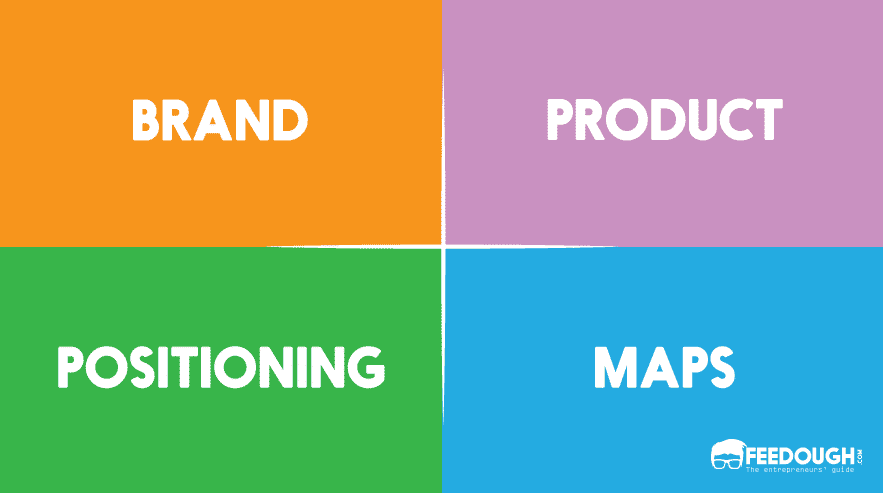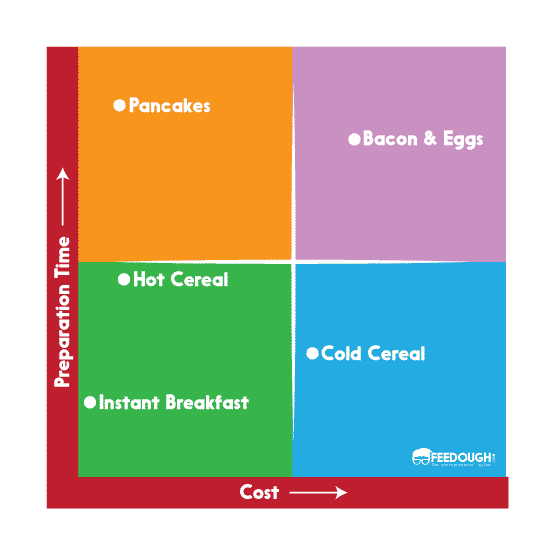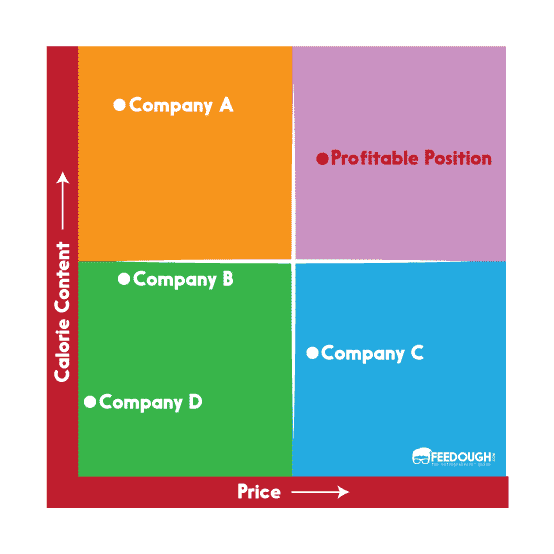A company’s position is the set of perceptions, impressions, ideas and feelings that consumers have for its product compared to competing products. Marketers often plan brand positions that give their products the highest competitive advantage in the selected target markets, and they then design the marketing mix to create these planned positions.
In planning their positioning, marketers often make use of and prepare perceptual maps that show consumer perceptions of their brand versus competing brands on attributes that are important to the consumer.
Let us first understand what perceptual maps are:
Perceptual Maps
A perceptual map is a visual technique designed to show how the average target market consumer understands the positioning of the competing products in the market. In other words, it is a tool that attempts to map the consumer’s perceptions and understandings in a diagram.
Typically the position of a company’s product, product line, or brand is displayed relative to their competition.
The most common presentation of a perceptual map is to use two determinant attributes such as X and Y axes of a graph.
Perceptual maps prove to be useful for the following four reasons:
- It helps in assessing strengths and weaknesses relative to competing brands based on certain criteria that is important to the customer.
- It helps in the identification of competitive advantage for the brand.
- It identifies market opportunities signified by empty spaces on the map.
- It shows how ideal points shifts as the market matures thereby helping a company to shift its positioning in order to retain or gain a competitive advantage.
These perceptual maps are widely used by companies as a tool in assessing and determining product and brand positioning.
Let us now have a look at how perceptual maps are widely used in determining and evaluating product and brand positioning.
Product Positioning Map
Product positioning map is a diagrammatic technique where the business uses perceptual mapping to visually display the position of the product against its competition. A product positioning map could include two or more variables (represented by axis) but to keep things simple and easy to understand, we usually take only two variables.
The idea of the Product Positioning Map is to determine and show where the product stands in relationship to the other competitor’s products via perceptual mapping.
The process of perceptual mapping involves selection of two variables on the basis of its importance to its customers by taking it on the X-Axis and Y-Axis respectively. We then plot the positions of the existing competitor products according to the extent to which they satisfy the two variables. The marketer now analyses the map in order to identify gaps that might be existing. These represent opportunities which the company in question can take advantage of.
Let us consider an example of a company wanting to analyse the competition for its product – A powder to add to milk which increases its nutritional value. This product is targeted to be used for breakfast.
The two variables to be taken into consideration are cost and preparation time. Here, cost could be taken on the X-Axis while preparation time on the Y-Axis. The extreme on the right would represent high cost whereas the left extreme would represent low cost. The top of the graph could represent high preparation time and the bottom would represent low preparation time.
We now start plotting the position of different products on this map. For example – cold cereal would have low preparation time and would be moderately expensive. So, this would be plotted towards the bottom of the graph slightly towards the right side (indicating that it is moderately expensive).
Similarly, we plot another product such as bacon and eggs which involved high preparation time and is slightly expensive. This would be plotted slightly towards the right (more than cold cereal) and towards the top of the graph.
We hence plot pancakes (high preparation time and inexpensive), hot cereal (moderate preparation time and inexpensive), instant breakfast (very low preparation time and very inexpensive) on the same map.
This gives us an idea of the existing products in the market and the possibility of a unique position that our new product could occupy. It also helps in identifying market gaps that could possibly be tapped profitably. This therefore provides the precise scope of the competition existing in the market and the company can now determine the positioning of its product.
Brand Positioning Map
Next comes the brand concept where we look at the Brand Positioning Map which is a perceptual map showing the current positions of all the existing competition brands as seen from the eyes of the customers.
If you’ve read our article on brand positioning, you’d already know how important brand positioning is for a company.
The brand positioning map helps the company decide the pricing and marketing strategies to be used to increase sales. In the case of the example stated above, it’ll help the company determine how much to charge and how much calorie content to keep in its breakfast offering.
First, we plot the positions of the existing companies according to their pricing and calorie content in a similar way as we did in the product positioning map – by taking the price on the Y-Axis and the calorie content of the X-Axis or vice versa. High price can be on top and low price on the bottom whereas low calorie content on the left and high calorie content on the right.
After plotting the competitor brands according to their pricing and calorie content, we search for an ideal position for our brand. A place next to an existing brand is to be selected if and only if their market offering is weak and it is easy to win their customers. Otherwise, the primary motive of every company is to have a different positioning in the market offering a differentiated product. This helps in creating a differentiated positioning in the minds of the customers.
A major task here in the brand positioning map is to identify the gap which can be profitably tapped by the company and thus selected is the positioning of the brand.
A differentiated brand positioning helps the company to sustain its market position as it generally serves the need of a specific group of customers and has higher chances of gaining a competitive advantage and a higher brand recall.
Go On, Tell Us What You Think!
Come on! Tell us what you think of our article on product positioning map & brand positioning map in the comments section.
A marketing professional, enthusiastic about connecting with new people and exchanging ideas. An avid traveler open to exploring new cultures and experiences












![What Is Green Marketing? [The Complete Guide] green marketing](https://www.feedough.com/wp-content/uploads/2018/11/green-marketing.webp)